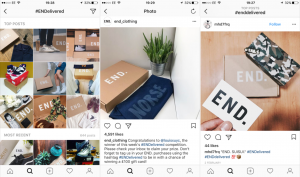Social media is changing the business landscape and redefining how business communicate across their channels of distribution and with their customers (Rapp et al, 2013). Additionally, businesses are witnessing a new level of activism from an influential constituency rarely heard from in the past – ordinary consumers (Booth & Matic, 2011).
These ordinary consumers are known as social media influencers, they represent a new type of independent third party endorser who shape audience attitudes through blogs, tweets, and the use of social media (Freberg et al, 2011). Halzack (2016) claims this recent experimental marketing practice has morphed into a mini-economy with dizzying financial stakes. The social media analytics firm Captiv8 estimates that big brands are spending a collective $255 million per month for sponsored posts on Instagram alone with some influencers demanding more than $150,000 per sponsored post.
These social media influencers have the power to shape customer’s perception of a brand, this is particularly important for small businesses, as reputation is a crucial part of business enterprise risk management (Arnold, 2006). Booth and Matic (2011) state these storytellers must be leveraged and cultivated as part of a firm’s social media strategy. Recognising who your storytellers are and engaging them in your brand’s discussion can shape, or in some cases, protect a brands reputation.
Big brands such as ASOS and End Clothing already have strong networks of social influencers and adopted successful ‘word-of-mouth’ marketing techniques as part of their social media strategies. ASOS ‘insiders’ is an excellent example where social media influencers shape the brands online discussion.
The ‘insiders’ are a group of stylish men and women across the globe who are promoted on the ASOS website. The profiles on the website link to the ‘insiders’ social media accounts where they promote clothes, accessories and beauty products that are available to buy on ASOS.com.
Another great example is End Clothing’s consumer competitions to maximize their digital ‘word-of-mouth’ marketing. Anyone who purchases a product from end clothing enters the competition by sending an image of that purchase with #ENDelivered to be in with a chance of £100 gift voucher. This fantastic initiative reaches the influencers direct ‘friends’ and ‘followers’, but what makes them truly valuable is the number and relevance of their extended or indirect connections (Hall, 2010). This initiative remains authentic and targets normal consumers with rewards, however, as the influencer business grows, more people rush to join and the authenticity which made it so successful in the first place becomes questionable.
Booth & Matic (2011) have created a customisable social media valuation algorithm to support practitioner’s in the identification of influencers and streamline the analysis. The list of variables includes:
- Viewers per month (vpm). The number of visits to the blog per month.
- The popularity of blog post links inbound and outbound.
- Post frequency. Volume of posts per given time
- Media citation score. Volume and level of media that cites blogger.
- Industry score. Number of industry guru points based on industry events such as key notes, bylines and panel participation.
- Social aggregator rate. Level of participation in the social web (e.g. Twitter, Facebook and Instagram)
- Engagement index. Reader response and the quantity of comments.
- Subject/topic-related posts. Volume and immediacy of subject/topic-related posts.
- Qualitative subject/topic–related posts. Qualitative review of subject/topic-related posts.
- Index score. Identification and rank of influencer in the social web based on above variables.
Lessons learned:
- Important for small business to incorporate social influencers into their digital marketing strategy.
- Influencers provide a relatable and non-biased message which is vital for a brands reputation.
- ‘Word-of-mouth’ marketing through influencers is an important technique for social media follower acquisition.
- Crucial to carefully select each influencer, categorize them into specific tiers and build long lasting relationships which have a clear strategy.
- Remain authentic!
There are also many agencies that can support in this process of influencer identification including:
http://www.sociallypowerful.com/#influencer-marketing-agency
References
Arnold, M. (2006) CEO’s respect importance of reputation, Haymarket Media Inc: New York.
Booth, N. & Matic, J.A. (2011) Mapping and leveraging influencers in social media to shape corporate brand perceptions, Journal of Corporate Communications. Vol. 16, No. 3, p184-191.
Freberg, K., Graham, K., McGaughey, K. & Freberg, L. (2011) Who are the social media influencers? A study of public perceptions of personality, Public Relations Review. Vol. 37, No, 1, p90-92.
Hall, T. (2010) ’10 Essential Rules for Brand in Social Media’ AdvertisingAge, 22nd March 2010 [Online] <http://adage.com/digitalnext/article?article_id=142907> [Accessed 26 February 2017]
Halzack, S. (2016) ‘Social media ‘influencers’: A marketing experiment grows into a mini-economy’ The Washington Post, 2nd November 2016 [Online] <https://www.washingtonpost.com/business/economy/social-media-influencers-a-marketing-experiment-thats-metastasized-into-a-mini-economy/2016/11/02/bf14e23a-9c5d-11e6-9980-50913d68eacb_story.html?utm_term=.b670bc17e357> [accessed 27 February 2017]
Rapp, A., Beitelspacher, L.S., Grewal, D. & Hughes, D.E. (2012) Understanding social media effects across seller, retailers, and consumer interactions, Journal of the Academy of Marketing Science. Vol. 41, No. 5, p547-566.


